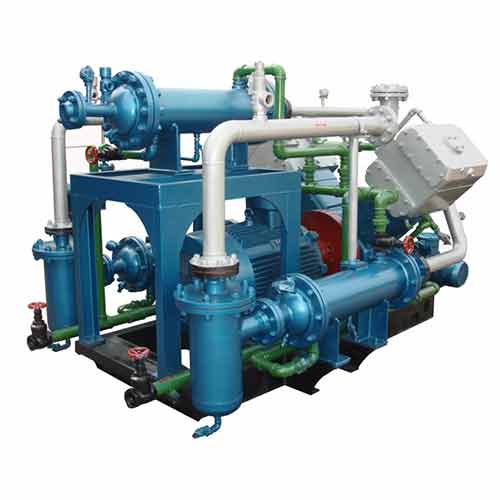Demystifying the Oilless Air Compressor Piston Ring

Hey there, DIYers and air compressor aficionados! If you’re into air compressors, you might have come across the term “oilless air compressor piston ring.” What exactly is it, and why is it important? In this article, I’ll be your guide as we dive into the world of oilless air compressors, specifically focusing on the piston ring. We’ll explore what it does, why it’s crucial, and how to take care of it. So, let’s embark on this journey to demystify the oilless air compressor piston ring!
Unveiling the Oilless Air Compressor Piston Ring
Let’s start with the basics. What is an oilless air compressor piston ring, and what role does it play?
What Is an Oilless Air Compressor Piston Ring?
An oilless air compressor piston ring is a specialized component within an oilless air compressor that plays a vital role in ensuring the compressor’s efficient and frictionless operation. Unlike traditional air compressors that use oil for lubrication, oilless compressors rely on alternative materials, including piston rings, to provide the necessary lubrication and sealing.
Why Does the Oilless Air Compressor Piston Ring Matter?
Now that we know what it is let’s explore why the oilless air compressor piston ring is so important:
1. Oil-Free Operation
One of the key advantages of oilless air compressors is their ability to provide clean, oil-free compressed air. The piston ring plays a pivotal role in this by eliminating the need for lubricating oil, making these compressors suitable for applications where oil contamination is a concern.
2. Reduced Maintenance
Oilless air compressors are known for their low maintenance requirements compared to oil-lubricated counterparts. The piston ring contributes to this by minimizing wear and tear on the compressor’s internal components.
3. Versatility
Oilless air compressors with well-maintained piston rings can be used in various settings, including dental offices, laboratories, and woodworking shops, where clean, oil-free air is crucial.
4. Efficiency
Efficiency is a hallmark of oilless compressors. The piston ring helps maintain the compressor’s efficiency by ensuring a proper seal and efficient compression, which can lead to energy savings.
How to Maintain Your Oilless Air Compressor Piston Ring
Now that you understand the importance of the piston ring in oilless air compressors, let’s explore how to maintain it for optimal performance:
Step 1: Regular Inspection
Inspect your piston ring regularly for signs of wear, damage, or debris buildup. If you notice any issues, address them promptly.
Step 2: Keep It Clean
Cleanliness is key. Ensure that the piston ring and the entire compressor are free from dust, debris, and oil residue. A clean compressor is less likely to experience issues.
Step 3: Monitor Air Filters
Air intake filters help keep contaminants out of the compressor. Check and replace these filters as needed to prevent debris from reaching the piston ring.
Step 4: Follow Manufacturer Recommendations
Adhere to the manufacturer’s maintenance guidelines, including recommended service intervals and procedures. This ensures your compressor operates at its best.
Step 5: Address Any Leaks
Air leaks can put unnecessary strain on your compressor and piston ring. Inspect the system for leaks and repair them promptly to maintain efficiency.
FAQs About Oilless Air Compressor Piston Rings
Q1: Can I use oil in an oilless air compressor to lubricate the piston ring?
No, oilless air compressors are specifically designed to operate without lubricating oil. Using oil can damage the piston ring and compromise the compressor’s performance.
Q2: How do I know when my piston ring needs replacement?
Signs of worn piston rings include decreased compression efficiency, increased noise, and visible damage. Regular inspections can help identify these issues.
Q3: Can I retrofit an oilless system with lubrication?
Oilless compressors are designed to operate without lubricating oil. Retrofitting them for lubrication is not recommended and can lead to issues.
Q4: Are there different types of oilless air compressor piston rings?
Yes, there are various types of piston rings designed for specific compressor models. It’s essential to use the appropriate replacement rings recommended by the manufacturer.
Q5: What safety precautions should I take when maintaining my oilless air compressor piston ring?
Always ensure the compressor is turned off and disconnected from the power source before performing maintenance. Safety goggles and gloves are recommended to protect against debris.
Conclusion
The oilless air compressor piston ring is a vital component that contributes to the efficiency and performance of your compressor. By understanding its role and following proper maintenance procedures, you can ensure that your oilless compressor operates smoothly, reliably, and with minimal maintenance requirements.
Whether you’re using an oilless compressor for your DIY projects or in a professional setting, keeping the piston ring in good condition is essential. Its ability to create a proper seal and facilitate efficient compression makes it a key player in the world of oilless air compressors.
For top-quality oilless air compressors and related products, check out CN Compressors’ offerings, including their process compressor and nitrogen compressor. These reliable compressors can complement your oilless compressor, enhancing your air compression capabilities.
So, keep that piston ring well-maintained, and your oilless air compressor will continue to serve you faithfully for years to come. Happy compressing!
